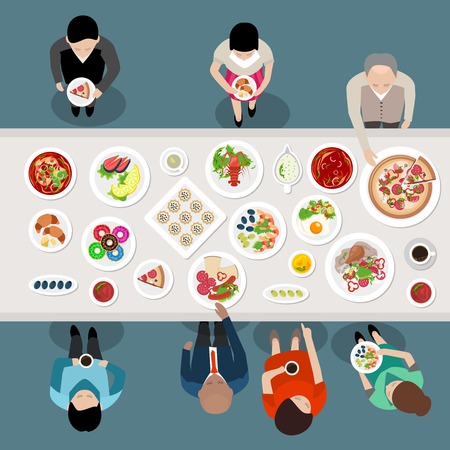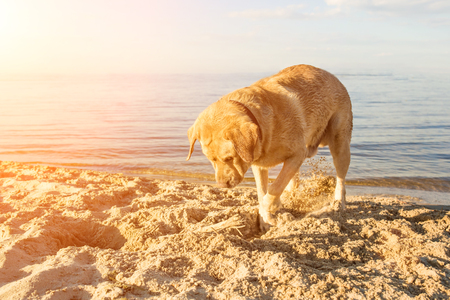Understanding Counter-Surfing and Food Stealing
Counter-surfing and food stealing are common behavioural challenges faced by many UK families with pets, especially dogs and cats. In a typical British household, these terms refer to the act of pets leaping onto kitchen counters, dining tables, or worktops to grab unattended food items. While it might seem cheeky or even amusing at first, this behaviour can quickly become a nuisance and may pose risks to your pet’s health and home hygiene.
Pets are naturally curious creatures, and their sense of smell is far superior to ours. The tempting aromas wafting from a Sunday roast, a freshly baked Victoria sponge, or even a packet of crisps left on the side can be irresistible for them. Additionally, British kitchens often feature open-plan layouts or low counters that make it easier for pets to reach forbidden treats. Common triggers include food left uncovered during family meals, children’s snacks forgotten on coffee tables, or rubbish bins that aren’t securely closed.
Understanding why your pet is drawn to certain foods or areas in your home is the first step towards prevention. For UK families who enjoy hosting gatherings like afternoon tea or traditional Sunday dinners, being aware of these triggers can help you create strategies to keep both your meals and your furry friends safe. Ultimately, tackling counter-surfing and food stealing is about balancing a happy household with the unique needs of your pets.
2. Common Scenarios in UK Homes
For British families, counter-surfing and food stealing often occur during the most cherished moments of daily life. Whether it’s a classic Sunday roast cooling on the kitchen worktop or a spread of sandwiches set out for afternoon tea, pets are experts at spotting opportunities to nab a treat. Understanding these everyday situations can help you spot the risk zones and times when your furry friend is most likely to strike.
Typical Food-Stealing Situations in British Households
| Scenario | Description | Risk Level |
|---|---|---|
| Sunday Roast on the Worktop | The traditional joint of beef or chicken left to rest before carving is irresistible for dogs and cats alike. | High |
| Baking Sessions | Baking scones, biscuits, or cakes with ingredients left unattended on counters. | Medium |
| Picnics in the Garden | Al fresco meals during warmer months, with food spread on low tables or picnic blankets within easy reach. | High |
| Afternoon Tea Setups | Delicate pastries and finger foods laid out for guests can tempt even the most well-behaved pet. | Medium-High |
| Packed Lunches for School Runs | Lunchboxes prepared in the morning may be left open briefly, attracting curious noses. | Medium |
| Evening Takeaway Night | Pizzas, curries, and chips enjoyed in front of the telly might be set down on coffee tables—right at dog height! | High |
| Baking Cooling Racks on Windowsills | Scones or bread left to cool by an open window can be an easy target for agile cats. | Low-Medium |
Timing is Everything: When Are Pets Most Tempted?
Certain times of day make food stealing more likely. For example, just before mealtimes—when pets are hungry—or during busy family gatherings when everyone’s attention is elsewhere. During holidays like Christmas or Easter, when festive treats abound, vigilance is especially important. Recognising these patterns helps you pre-emptively secure food and keep four-legged snack thieves at bay.

3. Training Techniques and Pet Management
Positive reinforcement is at the heart of dog training in the UK, and it’s especially effective when curbing counter-surfing and food stealing behaviours. Rather than punishing your pet for unwanted actions, focus on rewarding good behaviour to build trust and long-term habits. Start by catching your dog or cat doing the right thing—such as sitting calmly while you prepare meals—and immediately reward them with a favourite treat or plenty of praise. This approach not only reinforces positive choices but also helps create a calm environment around food.
Setting clear boundaries is essential for managing pets at home. Consider using baby gates to keep curious paws out of the kitchen during meal prep, or designate a ‘safe spot’ like a cosy bed or mat where your pet can relax while you’re cooking. In British homes, it’s common to train dogs with cues such as “leave it” or “off,” which should be practised regularly in non-food situations before being applied to kitchen scenarios. Consistency is key—everyone in the family needs to use the same commands and reward system so your pet doesn’t get mixed messages.
Another helpful UK-based strategy involves teaching impulse control through simple exercises. For example, practise asking your dog to ‘wait’ before being allowed into rooms or before receiving treats. Gradually increase the challenge by working closer to the kitchen or dining area, always rewarding self-control. Remember that patience and persistence are vital; change won’t happen overnight, but with regular practice, your furry friend will learn what’s expected of them. By blending these positive training techniques with sensible household management, UK families can enjoy peaceful mealtimes without worry about sneaky paws on the worktop.
4. Dog-Proofing Your Kitchen and Food Spaces
Dog-proofing your kitchen is essential for any UK family dealing with a clever canine who’s partial to a spot of counter-surfing. British homes often feature open-plan kitchens, galley layouts, or cosy kitchen-diners, so it’s important to tailor your approach to your specific space. Here are some practical changes you can make to keep both your food and your pup safe.
Practical Barriers: Baby Gates and Doors
One of the simplest ways to prevent food theft is by physically restricting your dog’s access. Installing baby gates in doorways or at the entrance to the kitchen is an effective strategy, especially in open-plan homes where traditional doors might not be present. For older properties with separate kitchens, simply closing the door during meal prep and when food is left unattended works wonders.
Securing Food Storage
Many dogs are drawn to the tempting smells of bread, biscuits, and cheese—staples in most British households. Using secure containers such as bread bins with tight-fitting lids or lockable cupboards can stop determined noses from finding a treat. Consider investing in sturdy storage solutions for worktops and pantries alike.
| Storage Solution | Common Use in UK Homes | Dog-Proof Benefit |
|---|---|---|
| Bread Bin | Bread, pastries | Keeps baked goods out of reach and scent-shielded |
| Lockable Cupboard | Sweets, snacks, cheese | Prevents persistent pets from getting into treats |
| Airtight Containers | Pasta, cereal, dry foods | Reduces tempting smells and secures loose items |
Clear the Counters: A Daily Habit
Keeping kitchen surfaces clear is perhaps the most reliable method for preventing counter-surfing. Make it a family habit to tidy up after each meal—putting away butter dishes, leftover toast, or any titbits that might catch your dog’s attention. It’s also wise to push chairs and stools under tables to avoid giving your dog an easy boost onto higher surfaces.
Quick Tips for British Kitchens:
- Install latches on low cupboards: Especially useful if you store pet food or bins at ground level.
- Use high shelves: Store tempting items like chocolate or roast leftovers well out of paw’s reach.
- Choose pedal bins with secure lids: Dogs are notorious bin-raiders; opt for bins that stay shut even when knocked over.
- Curtain off utility areas: Lightweight tension rods with curtains can block access if a gate isn’t suitable.
A British Family Routine Example:
- Mum preps dinner while Dad sets up the baby gate across the kitchen doorway.
- The kids help clear plates straight after tea, placing leftovers in airtight containers and storing them in the fridge or a high cupboard.
- The family checks that chairs are tucked in and all surfaces are wiped down before leaving the kitchen for an evening stroll with their four-legged friend.
Taking these simple steps will help you outsmart even the craftiest canine, ensuring your kitchen remains a safe and hygienic hub for family life—without unwanted furry feasts!
5. Safe Food Storage Tips for UK Families
Proper food storage is a cornerstone in preventing counter-surfing and food stealing, especially in busy UK households where pets are part of the family. Here are some practical tips tailored for British homes to keep both your meals and furry friends safe.
Choose Secure Containers
Lidded tins and airtight containers are quintessentially British solutions for storing biscuits, cakes, and other tempting treats. Invest in sturdy, sealable tins or plastic boxes that can be stacked on high shelves or tucked away in cupboards. This not only keeps food out of paws’ reach but also maintains freshness—ideal for everything from homemade bakes to shop-bought snacks.
Fridge First for Leftovers
After meals, make it a habit to put leftovers straight in the fridge rather than leaving them on the worktop to cool. Modern UK fridges often come with adjustable shelves—use these to store plates or pots safely. Not only does this reduce temptation for your pet, but it also helps you cut down on food waste, which is a win-win!
Mind the Bread Bin
Bread bins are common in many British kitchens but can sometimes be easy targets for clever paws. Choose heavy or lockable bread bins, and avoid leaving them at the edge of counters. If your pet is particularly persistent, consider storing bread in the fridge or a high cupboard.
Foods Especially Dangerous to Pets
While all human food should be kept away from pets, certain items are particularly hazardous. Common UK household foods such as chocolate (especially dark varieties), grapes and raisins (including those found in mince pies and fruitcakes), onions, garlic, and xylitol (an artificial sweetener found in some sugar-free products) can cause serious harm to dogs and cats. Always keep these foods well out of reach—preferably behind closed doors or inside locked cabinets.
Keep Counters Clear
Make clearing kitchen surfaces part of your daily routine. Wipe down counters after cooking and put away any food prep items immediately. Not only does this help deter sneaky four-legged scavengers, but it also keeps your kitchen tidy and ready for its next use.
By embracing these simple yet effective storage habits, UK families can enjoy peace of mind knowing their food is safe from curious noses—and their pets are protected from accidental snacking mishaps.
6. Engaging Your Pet’s Mind and Body
Keeping your dog or cat mentally and physically stimulated is one of the best ways to prevent counter-surfing and food stealing in UK family homes. Bored pets are far more likely to go sniffing around the kitchen worktop or dining table in search of a sneaky snack. By introducing engaging activities, you can redirect their attention and energy into positive behaviours.
Puzzle Toys for British Pets
Investing in puzzle feeders or treat-dispensing toys is a simple yet effective strategy. Brands readily available across the UK, such as KONG and Nina Ottosson, offer interactive toys that challenge your pet to solve puzzles for tasty rewards. These not only slow down eating but also keep curious minds occupied when you’re busy making dinner or having a cuppa.
Daily Routines: Walks and Playtime
For our canine companions, regular walks are essential. Whether it’s a stroll through your local green space, park, or along the towpath, these outings provide much-needed exercise and mental stimulation from all the new smells and sights. Try mixing up your routes—exploring different parts of the neighbourhood keeps things interesting for both you and your pup.
Indoor Activities for Rainy Days
We all know British weather can be unpredictable! On those drizzly days, try indoor games like hide-and-seek with treats, tug-of-war, or basic training sessions using positive reinforcement. These activities burn off energy and reinforce good habits at home.
Cats Need Enrichment Too
If you share your home with a feline friend, consider window perches for bird-watching, puzzle feeders designed for cats, or feather wands to mimic hunting play. Scratching posts and climbing trees also help satisfy their natural instincts—and distract them from kitchen counters!
Building these UK-friendly activities into your daily routine will help ensure your pet is happy, healthy, and less likely to go on a food-finding mission while you’re not looking.
7. What To Do If Your Pet Steals Food
Even with the best precautions, there may be times when your pet manages to snatch something off the counter. Here’s how to handle those moments calmly and safely. First and foremost, resist the urge to shout or chase after your pet—this can turn food stealing into a game and reinforce unwanted behaviour. Instead, use a firm but calm voice to ask them to “leave it” or “drop it.” If your pet complies, reward them with praise or a suitable treat. If they have already swallowed something, assess what it was; some foods common in British households, such as chocolate, grapes, onions, or cooked bones, can be dangerous or even toxic to pets.
Ensure Your Pet’s Safety
If you suspect your dog or cat has eaten something harmful, try to determine how much they’ve consumed and make a note of the time. Remove any remaining food from their reach to prevent further issues. Avoid trying home remedies like inducing vomiting unless specifically instructed by your vet, as this can sometimes cause more harm than good.
Contacting Your Local Vet
For potentially dangerous foods or if your pet displays symptoms such as vomiting, diarrhoea, lethargy, or difficulty breathing, contact your local veterinary surgery straight away. In the UK, many areas have out-of-hours emergency services—keep their number handy just in case. Provide all relevant information about what was eaten and follow their advice closely. The sooner you act, the better the chances of a positive outcome for your furry friend.
Staying Calm and Prepared
Remember, accidents happen—even in the most organised homes. Responding with patience and quick thinking will help keep your pet safe and healthy. Over time, maintaining a consistent approach will also reinforce better habits and reduce future incidents of counter-surfing and food theft.


